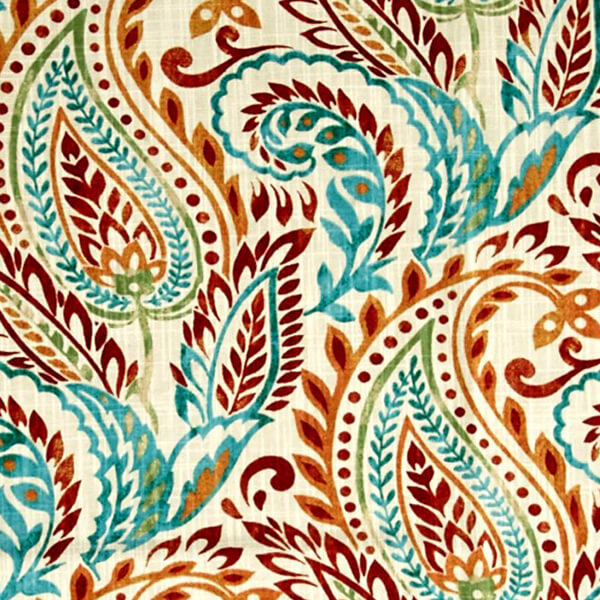Paisley
Paisley is a teardrop-shaped motif with a curled ending. It is commonly seen in Bohemian, Boho Chic, Moroccan, and Indian decors.

Originally named buta, or boteh meaning flower the design originated in Persian. The pattern was popular with hand-loomed Kashmir shawls which Europeans brought home on their travels to India. The modern name of Paisley come from the town of Paisley, located in West Scotland where textiles with the design were widely produced.
Paisley designs date back approximately to 1700 BCE. Expressing essence the droplet shape became a popular decorative element used by the Azerbaijani culture and architecture. The paisley design can also be found in the symbol for Yin and Yang and is a zoroastrian symbol of life and eternity.
The East Indian Company made paisley an international pattern when it began exporting Indian fabrics to Western Europe. Like Calico and Chintz, Paisley became outlawed to protect the French and English textile manufacturing industries. They kept the designs, though, and produced their own versions with most of what is now known as Paisley being manufactured in Paisley, Scotland. The Paisley mill adapted their looms to use five colors of thread instead of two. Yet they still could not match the number of colors being woven into shawls in Kashmir.
Embracing a psychedelic style the pattern became mainstream leading up to the mid- and late-60's era. Contemporary and traditional the shape of Paisley is widely known and is commonly used for men's ties and suit linings.
Paisley is commonly used in Bohemian, Boho Chic, Moroccan, and Indian decors. The depending on the style and color of Paisley, it is sometimes used in transitional and traditional decors.









Leave a comment
This site is protected by hCaptcha and the hCaptcha Privacy Policy and Terms of Service apply.